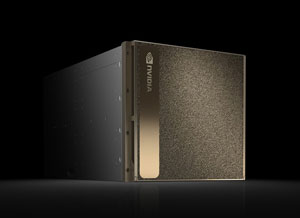Oregon State U Amps Up AI Computing Power

NVIDIA DGX-2
Oregon State University's College of Engineering has deployed six new supercomputers to support research and education on campus. The institution selected Microway to provide the NVIDIA DGX-2 supercomputer systems, as well as deployment services and bringup expertise.
The NVIDIA DGX-2 platform was selected for its "immense power, technical support services, and the Docker images with NVIDIA's NGC containerized software," according to a news announcement. Each DGX-2 has 16 Tesla V100 GPUs with 2 petaFLOPS of AI computing power.
The new setup will serve the needs of both undergraduate classes and research workloads, including applications in medical imaging, nuclear science, bridge construction, robotics and driverless vehicles.
"We want to attract the very best to our campus, whether student, staff, or faculty, and we think the DGX-2 is going to go a long way to show how serious we are about that," commented Todd Shechter, director of information technology at Oregon State's College of Engineering, in a statement. "Microway's expert knowledge of the DGX-2 system and ability to train Oregon State IT professionals to operate the supercomputers play a key role in ensuring Oregon State's future success in research endeavors and undergraduate education."
About the Author
Rhea Kelly is editor in chief for Campus Technology, THE Journal, and Spaces4Learning. She can be reached at [email protected].